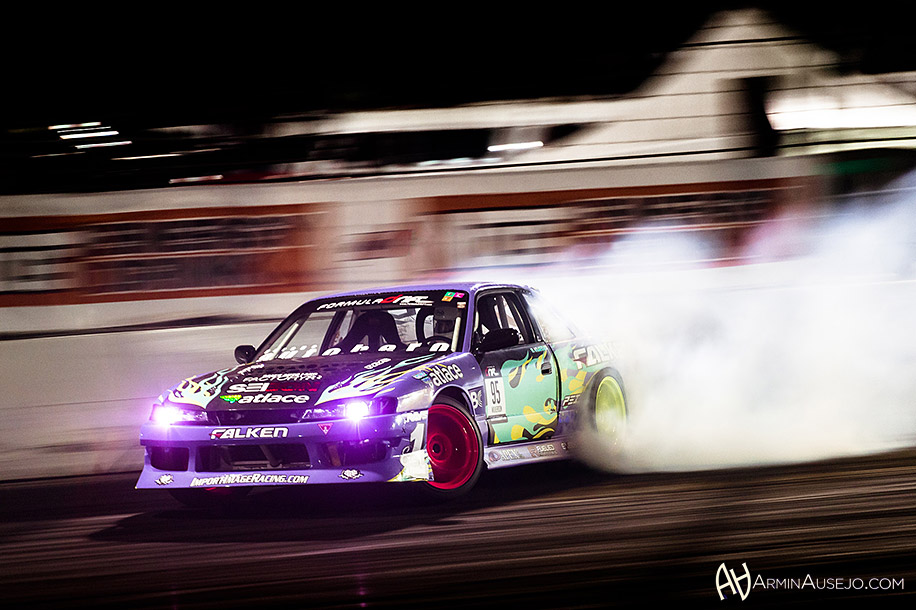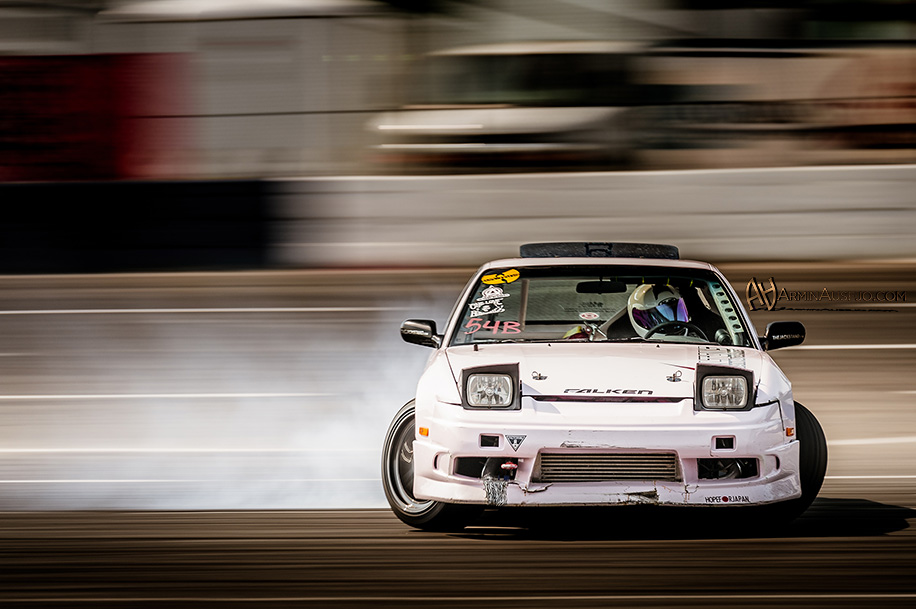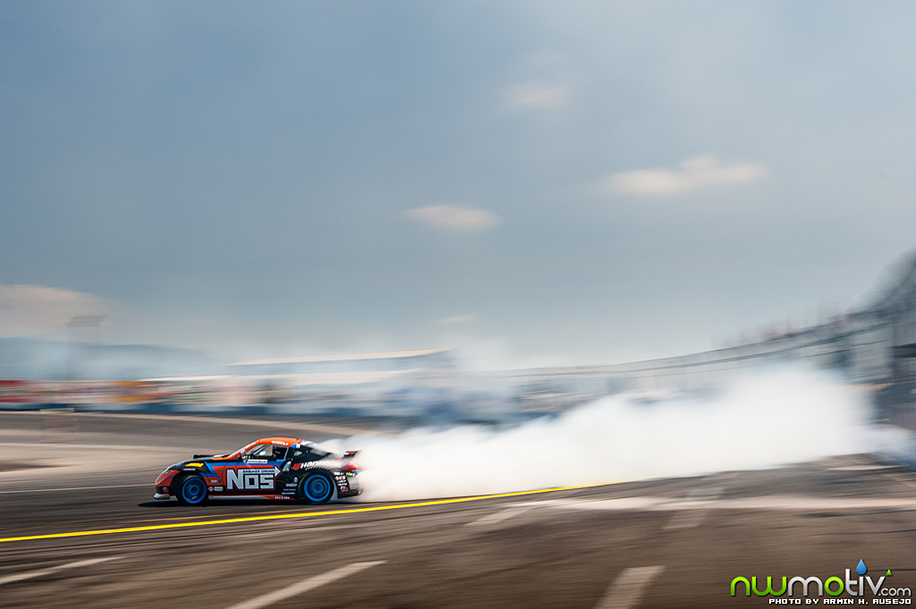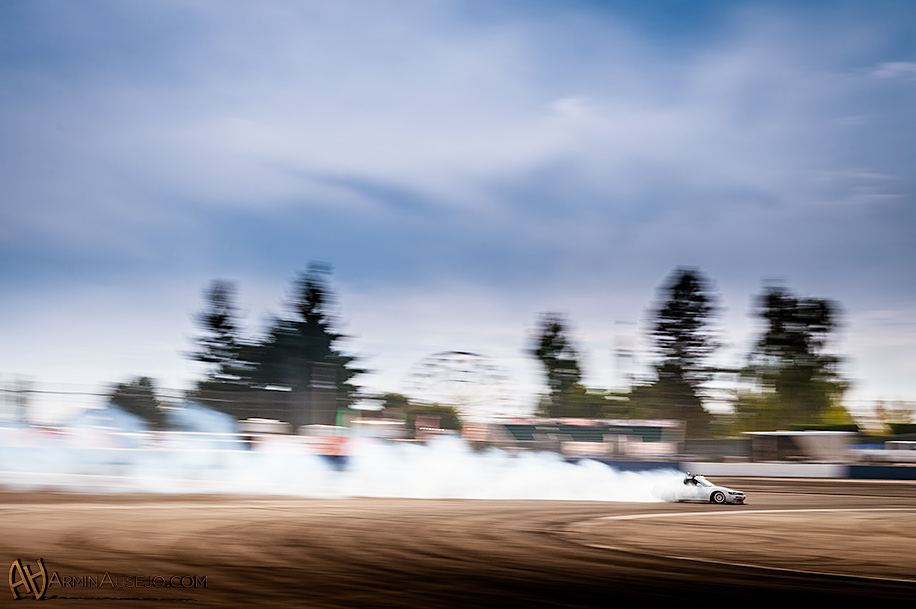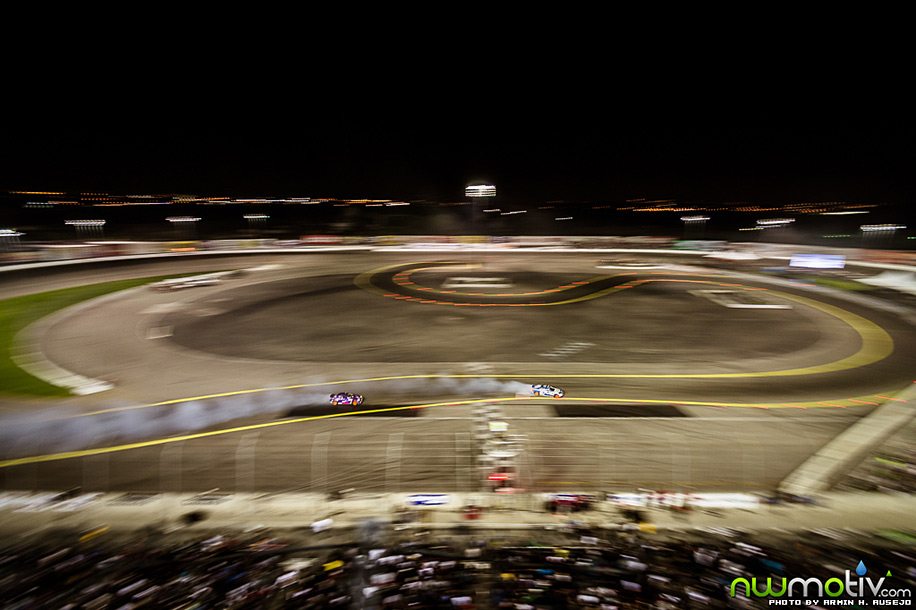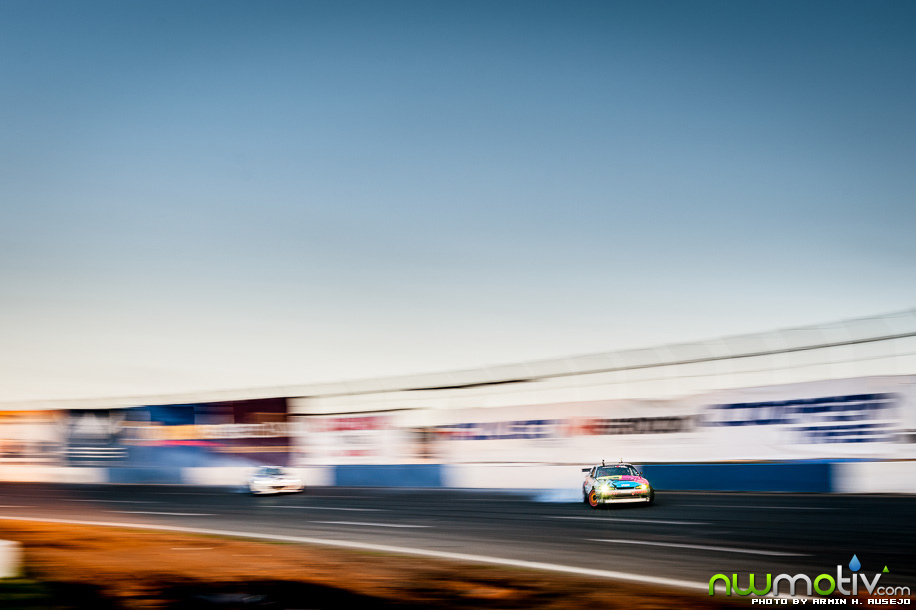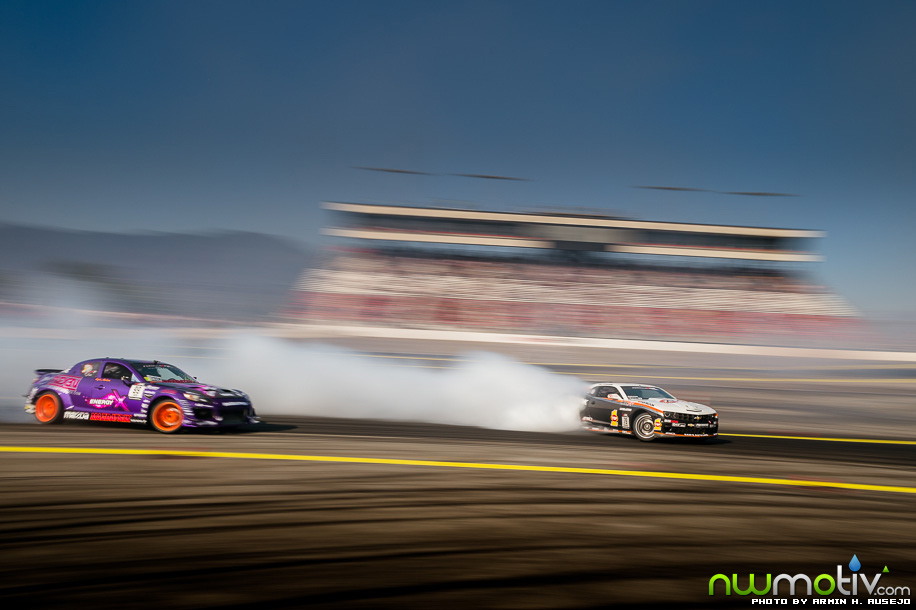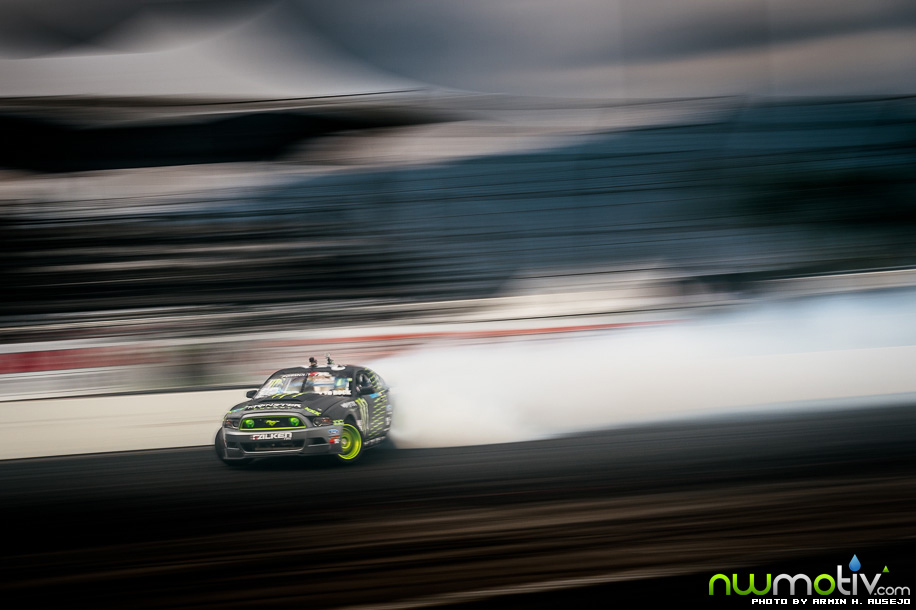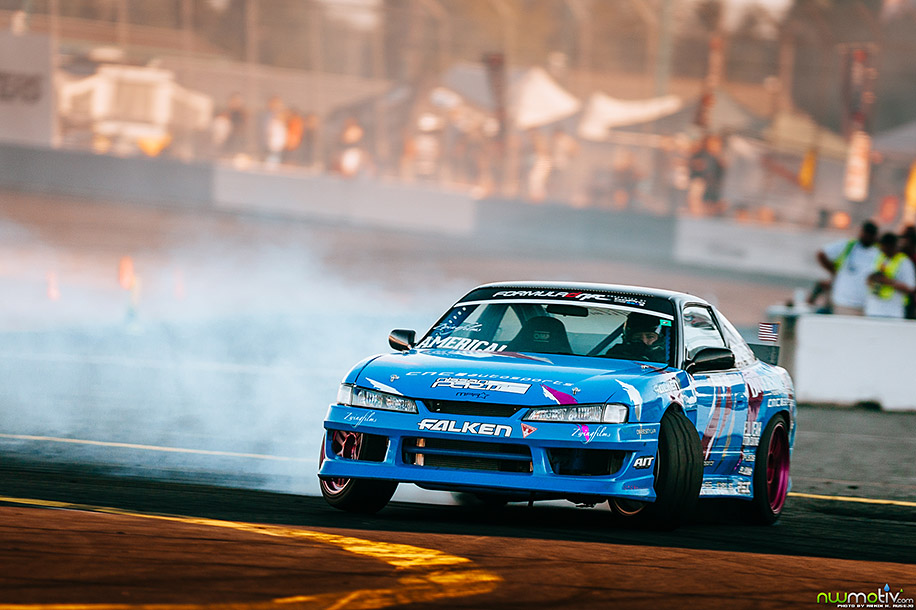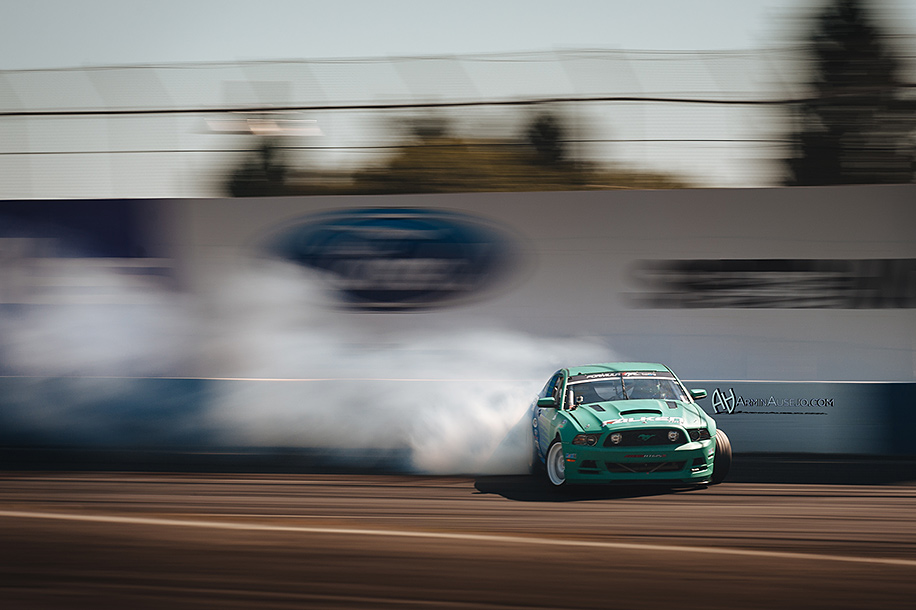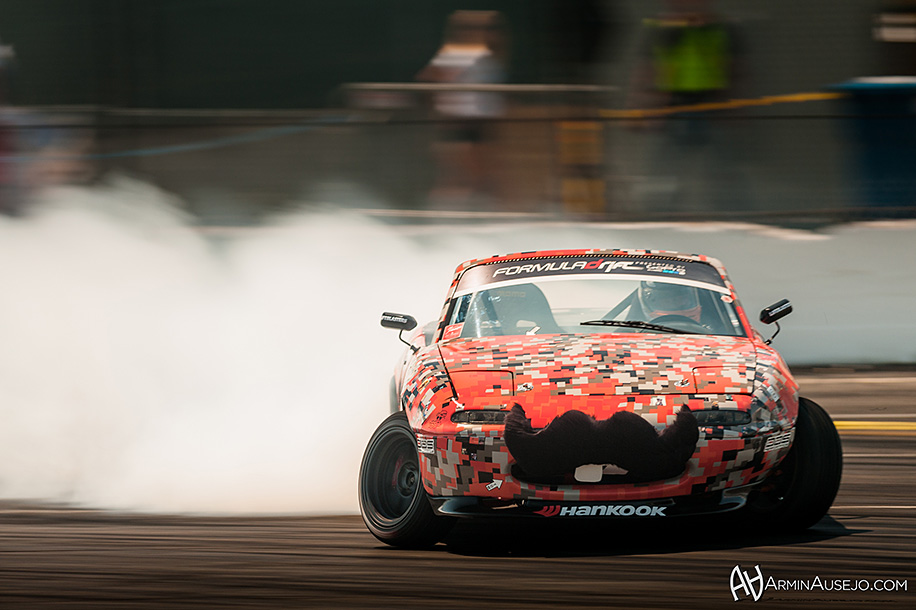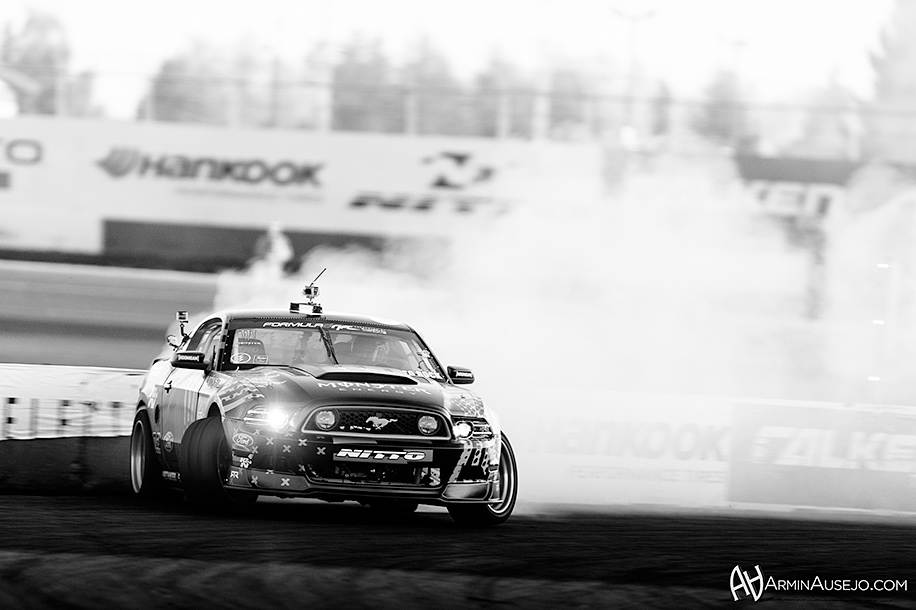This guest post is by Armin H. Ausejo (websites: arminausejo.com | arminweddings.com | Twitter | Facebook, click on images for larger view):
Motorsports, in some form or another, has been around for more than a century, and of course documenting motorsports through photography has been around for just as long. While motorsports generally involves competing to be the fastest from Point A to Point B, one form of motorsports known as “drifting” involves style and precision, rather than outright speed and lap times. Originating on the twisty mountain roads of Japan in the 1980s, purists may not regard this as a proper form of motorsports, but it’s definitely among the most exciting to watch and photograph.
I’ve been shooting drifting since 2006, and over the years I’ve used a variety of different Nikon bodies: D200, D300, D700, and D4. When I first started shooting motorsports, I was one of only a handful of Nikon shooters amongst a sea of white lenses, but as the years have gone by, I’ve been seeing more and more Nikon shooters out on track with me. Unlike most other motorsports, drifting is very dynamic by nature and as a photographer, my goal isn’t simply capturing a frozen moment in time, but also the passage of time, the motion of the cars, and even the tire smoke itself.
It’s very important to capture context with the subject, so simply setting your camera to a fast shutter speed and zooming in as close as possible often doesn’t deliver the best results. Drifting isn’t just about the car(s) as the subject: there’s the look on the driver’s faces, the crowd roaring behind them, the smoke billowing from the rear tires, and sometimes even the other media along side you on track. One of the ways I try to capture all of these nuances is by switching between telephoto and wide angle lenses. My Nikkor 70-200mm f/2.8G VR2 is definitely my go-to lens for motorsports, but I’ll also switch to my Nikkor 24-70mm f/2.8G and get some wide shots.
I also have a Tokina 17mm f/3.5 that I’ll use when I went to get really wide, providing a perspective that really pops out at the viewer, albeit often a little distorted. It can often be a little hair-raising to use this lens on track, since you really have to get up close and personal with a car flying past you in very close proximity.
Using different lenses, focal lengths, and angles is important for drift photography, but the one thing that you absolutely can’t live without when shooting drifting is the ability to pan with the subject. Panning isn’t easy; it takes a lot of practice, patience, and willingness to throw away a lot of photos. I typically advise first-time track shooters to start at a relatively fast shutter speed, anywhere between 1/125 sec and 1/200 sec. You don’t want to set the shutter too fast; otherwise you’ll stop the motion of the wheels, making the car look like it’s simply just parked on the track. You also don’t want to set the shutter too slow to start, since you’ll have a hard time judging if you’re getting your panning fundamentals in place.
I also advise to set the camera to continuous focus and burst fire mode, with the autofocus point where you’d want the front bumper of the car to be in your frame. Sure, you might be able to get away with just taking one or two shots and manual focusing, but when you first start out, it’s much easier to go this route until you get more panning shots under your belt. As you improve with practice, you’ll start to notice that you’ll have more and more sharp “keeper” photos, and fewer photos that are just simply out of focus. Once you reach this point, it’s time to start slowing down the shutter speed and seeing if you can continue to get sharp keeper photos. For me personally, I’m able to get consistent sharp photos at 1/30 sec, but I also sometimes shoot as slow as 1/10 sec to achieve some really nice results.
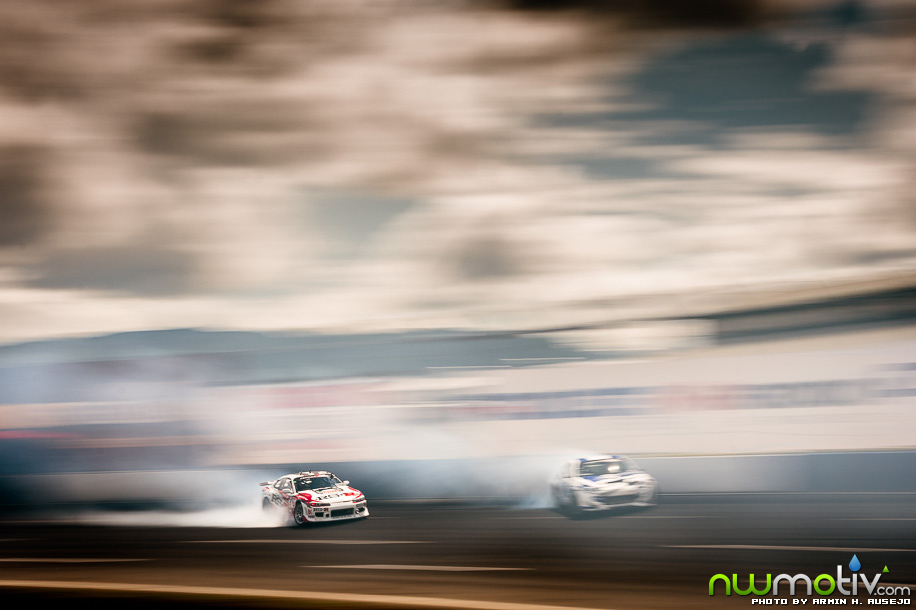
Ken Gushi vs. Toshiki Yoshioka, Nikon D700, Nikkor 70-200mm f/2.8G VR2, 70mm, 1/10 sec, f/13, ISO 200
To help achieve these long shutter speeds, you’ll more than likely need an ND filter, and for all automotive photography, a circular polarizer is absolutely essential. Each of these photos was taken with a B+W or Nikon drop-in circular polarizer, along with a B+W 3-stop ND filter or ND film when necessary. Either way, panning is all about practice, practice, and more practice.
Shooting drifting is very easy to get into, since many of the major racetracks around the country have “open drifts,” allowing locals to just get on track with their cars and learn how to slide their cars sideways around the track. Just be sure to keep it on the track; I definitely do not condone doing this sort of thing on public roads. I hope you enjoyed this guest post and please feel free to contact me if you have any questions or need some advice.
Armin H. Ausejo
Senior Editor, NWMotiv.com
Portfolio: ArminAusejo.com

Mike Essa vs. Chris Forsberg, Nikon D700, Nikkor 300mm f/2.8G VR2, 300mm, 1/160 sec, f/2.8, ISO 1250
If you have an interesting idea for a guest post, you can contact me here.

